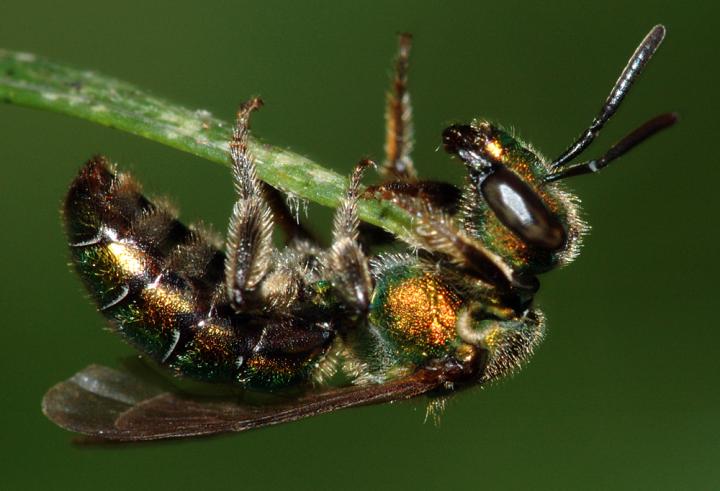Entomological Society of America

Although corn and soybeans do not need insects for pollination, they do offer floral resources that are used by insect pollinators. So what kind of insects are commonly found in corn and soybean fields? The answer to that question can be found in a new article published in Environmental Entomology.
Researchers from Iowa State University used modified pan traps to compare the insect communities found in the two crops. All in all, they captured 6,704 individual insects representing at least 60 species. Thirty-four species were collected in both crops, 19 were collected only in corn, and seven were collected only in soybean.
The most abundant insects were solitary, ground-nesting bees, which accounted for 65% of the insect pollinators collected from both crops. Surprisingly, honey bees and bumble bees accounted for only 0.5 percent of all insects captured.
“Even though production agriculture includes practices that negatively impact pollinators, a community of pollinators persists within them,” the authors wrote. “Despite a reduction in plant diversity that has come with the production of corn and soybeans, there may still be biodiversity that could respond to conservation efforts.”
Since most of the pollinators found in the survey were ground-nesting bees, the researchers suggest that increasing the adoption of no-till practices may increase their numbers since tillage can destroy their nests. This could potentially help soybean farmers, as previous studies have shown that unmanaged bees can increase yields by as much as 6 percent.
A program known as STRIPS (Science-based Trials of Row-crops Integrated with Prairie Strips) could also benefit pollinators. Although the program was designed to prevent nutrients and sediment from eroding into watersheds, it could also benefit pollinators by providing a variety of flowering plants for them to forage.